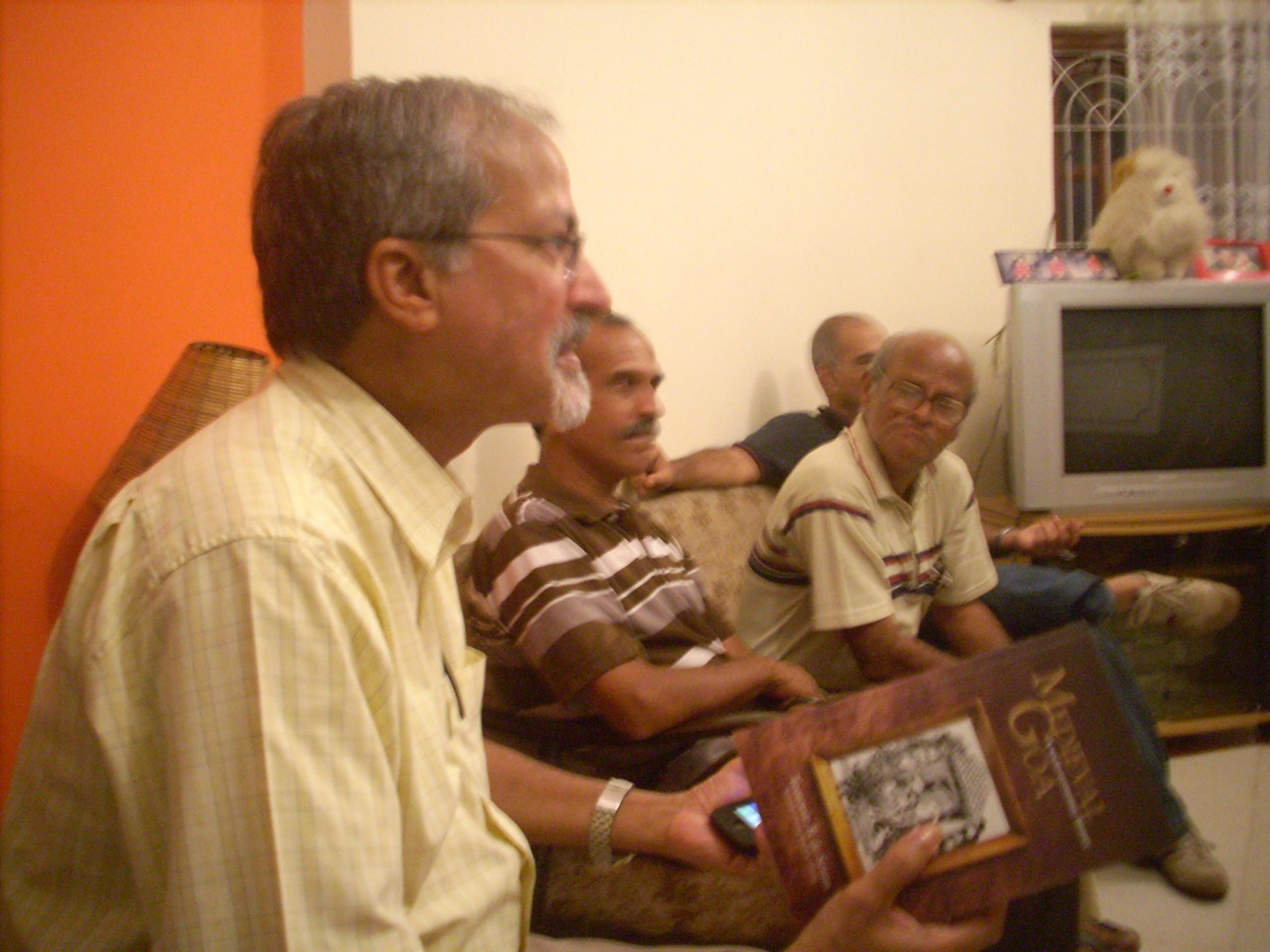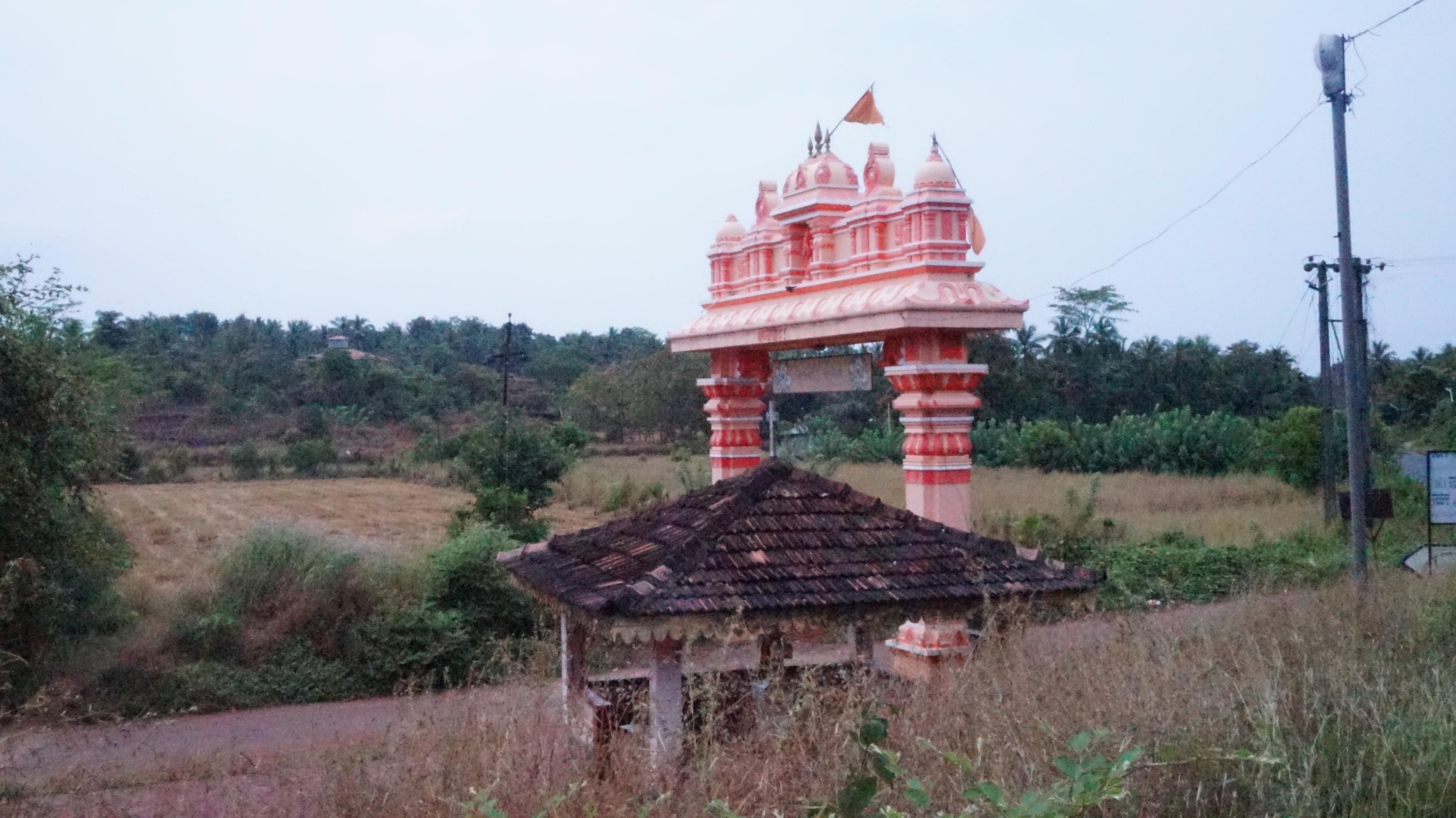Moira, Goa on:
[Wikipedia]
[Google]
[Amazon]
Moira () is a village in the Bardez Taluka of the North
 Glenis Maria D'Souza writes of the village and its people: "If you behave a little idiosyncratic icin Goa, don't be surprised if you are called a 'Moidekar'." The villagers are known thus for being hardworking and fun-loving at the same time.
Glenis Maria D'Souza writes of the village and its people: "If you behave a little idiosyncratic icin Goa, don't be surprised if you are called a 'Moidekar'." The villagers are known thus for being hardworking and fun-loving at the same time.
 Leroy Veloso, who has studied local genealogy issues, says that there are five (founding families, or clans) in Moira. According to Veloso, the third is a composite of families with a number of surnames. They include
Leroy Veloso, who has studied local genealogy issues, says that there are five (founding families, or clans) in Moira. According to Veloso, the third is a composite of families with a number of surnames. They include
 * Jack Sequeira – prominent Goa politician and Goa's first Leader of the Opposition
*
* Jack Sequeira – prominent Goa politician and Goa's first Leader of the Opposition
*
 * The backwaters of Moira provide a scenic view
* Assoçiacão Académica de Moira: Sataporio locality's Moira Club was founded in 1920
* Dr Jack de Sequeira's ancestral house: It is located at Bambordem
* Moira bridge: This bridge at Atafondem connects Moira to Bastora and was built in 1978
* Our Lady of Immaculate Conception Church: Built in 1636, it is located between Raim and Calizor. From 1838, it housed a unique bell, which had previously been part of
* The backwaters of Moira provide a scenic view
* Assoçiacão Académica de Moira: Sataporio locality's Moira Club was founded in 1920
* Dr Jack de Sequeira's ancestral house: It is located at Bambordem
* Moira bridge: This bridge at Atafondem connects Moira to Bastora and was built in 1978
* Our Lady of Immaculate Conception Church: Built in 1636, it is located between Raim and Calizor. From 1838, it housed a unique bell, which had previously been part of
Village blogPhotos of MoiraArticles on Moira
Villages in North Goa district Ferdinand Cron
Goa
Goa () is a state on the southwestern coast of India within the Konkan region, geographically separated from the Deccan highlands by the Western Ghats. It is located between the Indian states of Maharashtra to the north and Karnataka to th ...
District in India
India, officially the Republic of India ( Hindi: ), is a country in South Asia. It is the seventh-largest country by area, the second-most populous country, and the most populous democracy in the world. Bounded by the Indian Ocean on the ...
. It has been home to a number of notable individuals from Goa, while other prominent persons trace their roots to it. Till the recent past, Moira has been known for its typical, large bananas (known as ''Mundollchim kellim'' in Konkani) that grew in the area.
Origin of name
The village derives its name from either from 'Moriya', which describes a Mauryan settlement (the 'mor' () was an important symbol of the Maurya empire) or from 'Moim', a locality nearTivim
Tivim pronounced Thivim, is a village in Nathivim in Bardez, in the North Goa district of Goa, India. It is an important gateway into North Goa as the home to the major railway station in North Goa. Tivim was also the ancestral village of the fi ...
(many of Moira's initial settlers came from Tivim).
Historian the late Dr. Teotónio de Souza published a brochure on Moirá for its church's 350th anniversary in 1986. His writing on the same subject is also available in a local text recently released.
Christianity
The mass conversions of Moira villagers to Christianity are believed to have happened around 1619, according to De Souza. A deed drawn up in Goa on 14 March 1623 and preserved in the National Library of Lisbon records that Joseph de Coutre (known as "Couto" in Goa) financially assisted the Franciscans to build the first Moira church. This conflicts with the account by Paulo de Trindade, who said that the church was financed entirely by local villagers. The two Flemish brothers—diamond dealers Jacques and Joseph de Coutre—lived in Goa at the time the church was being built. Although men and women were arrested by the Holy Office of the Inquisition during its ''auto-da-fé
An ''auto-da-fé'' ( ; from Portuguese , meaning 'act of faith'; es, auto de fe ) was the ritual of public penance carried out between the 15th and 19th centuries of condemned heretics and apostates imposed by the Spanish, Portuguese, or ...
'' in the cathedral on 7 December 1664, Moira was relatively unscathed by the Portuguese Inquisition
The Portuguese Inquisition ( Portuguese: ''Inquisição Portuguesa''), officially known as the General Council of the Holy Office of the Inquisition in Portugal, was formally established in Portugal in 1536 at the request of its king, John III. ...
.
Moira in recent times
Moira village has seen a lot of out-migration, including as part of earlyGoan
Goans ( kok, गोंयकार, Romi Konkani: , pt, Goeses) is the demonym used to describe the people native to Goa, India, who form an ethno-linguistic group resulting from the assimilation of Indo-Aryan, Dravidian, Indo-Portuguese, and ...
migration to then British-ruled Africa, in the 20th century. In the past two decades or so, other settlers have set up homes in the village. In 2020, the local village club—the Associação Académica de Moira—celebrated its centenary. It is now also home to some prominent centres of art and cuisine.
Reputation
In his essay "The Wise Fools of Moira", Prof Lucio Rodrigues describes the village and its villagers thus:...the river of Mapusa flows along its southern, western and northern sides, making its soil very fertile. The village is famous for many things, among others for its banana plantations, which yield big, long bananas, called ''munnouchinz kellim'' in Konkani, and each fruit is equal to a square meal. Each grows to the length of nearly a foot with a diameter of about two and a half to three inches... But the bananas are not Moira's chief claim to fame amongGoan Goans ( kok, गोंयकार, Romi Konkani: , pt, Goeses) is the demonym used to describe the people native to Goa, India, who form an ethno-linguistic group resulting from the assimilation of Indo-Aryan, Dravidian, Indo-Portuguese, and ...villages. The people are as famous, if not more than their ''kellim'' ananas so famous indeed that they have passed into simile and proverb and legend. They are among the most industrious people of Goa. Blessed as they are with fertile land, they have used Nature's gift to raise many crops - rice, chillies, vegetables, bananas. Every Friday will see them wending their way with their produce on their head to the weekly fair at Mapuca. But it is not their industriousness that signals them out for unique honour among their Goan fellows. It is for a legacy that they have inherited from their forefathers - a wisdom that is traditional. This wisdom has a stamp of its own which defies definition. Perhaps you have heard of the wise men of Gotham, and of their ingenious feats. The wise men of Moira of old were as ingenious. There is only one other village in Goa which rivals Moira in this characteristic and that is Benaulim in Salcete. Even in Konkani it has not been possible to give this baffling quality an appropriate term. This is how the people of Bardez describe the indefinite trait. ''To moiddekar num re,'' he is a guy from Moira, ''sarkoch moiddekar'', every inch like a guy from Moira; take ''matxem moiddechem assa'', he's got a bit of it from Moira.
 Glenis Maria D'Souza writes of the village and its people: "If you behave a little idiosyncratic icin Goa, don't be surprised if you are called a 'Moidekar'." The villagers are known thus for being hardworking and fun-loving at the same time.
Glenis Maria D'Souza writes of the village and its people: "If you behave a little idiosyncratic icin Goa, don't be surprised if you are called a 'Moidekar'." The villagers are known thus for being hardworking and fun-loving at the same time.
Families in the area
 Leroy Veloso, who has studied local genealogy issues, says that there are five (founding families, or clans) in Moira. According to Veloso, the third is a composite of families with a number of surnames. They include
Leroy Veloso, who has studied local genealogy issues, says that there are five (founding families, or clans) in Moira. According to Veloso, the third is a composite of families with a number of surnames. They include Jack de Sequeira
Jack de Sequeira (Born João Hugo Eduardo de Sequeira; 20 April 1915 – 17 October 1989), popularly known as Dr Jack de Sequeira; also known as Jak Siker according to local naming conventions, was an Indian politician and is widely considere ...
, and Erasmo Sequeira.
Notable residents, or people tracing roots to Moira
 * Jack Sequeira – prominent Goa politician and Goa's first Leader of the Opposition
*
* Jack Sequeira – prominent Goa politician and Goa's first Leader of the Opposition
* Erasmo de Sequeira
Erasmo Jesus de Sequeira (1938/1939 - 16 July 1997) was an Indian politician, social worker and parliamentarian from Goa. He represented the Marmagoa parliamentary constituency twice from 1967–1977. He has been described as a "man of let ...
– former Member of Parliament for South Goa
* Teotonio R de Souza – prominent Indo-Portuguese historian, and former Director of the Xavier Centre of Historical Research
The Xavier Centre of Historical Research is a Jesuit history research centre located in Alto Porvorim, Goa in India. It was founded in the late 1970s and its first director was John Correia Afonso SJ. After John Correia Afonso, Dr. Teotonio R. d ...
, Alto-Porvorim, Goa
Attractions in the locality
 * The backwaters of Moira provide a scenic view
* Assoçiacão Académica de Moira: Sataporio locality's Moira Club was founded in 1920
* Dr Jack de Sequeira's ancestral house: It is located at Bambordem
* Moira bridge: This bridge at Atafondem connects Moira to Bastora and was built in 1978
* Our Lady of Immaculate Conception Church: Built in 1636, it is located between Raim and Calizor. From 1838, it housed a unique bell, which had previously been part of
* The backwaters of Moira provide a scenic view
* Assoçiacão Académica de Moira: Sataporio locality's Moira Club was founded in 1920
* Dr Jack de Sequeira's ancestral house: It is located at Bambordem
* Moira bridge: This bridge at Atafondem connects Moira to Bastora and was built in 1978
* Our Lady of Immaculate Conception Church: Built in 1636, it is located between Raim and Calizor. From 1838, it housed a unique bell, which had previously been part of Old Goa
Old Goa ( Konkani: ; pt, Velha Goa, translation='Old Goa') is a historical site and city situated on the southern banks of the River Mandovi, within the Tiswadi ''taluka'' (''Ilhas'') of North Goa district, in the Indian state of Goa.
The ...
's Madre de Deus convent
* St Xavier’s High School: Founded on 5 June 1935 it is run by the Diocesan Society of Education
References
{{ReflistExternal links
Village blog
Villages in North Goa district Ferdinand Cron